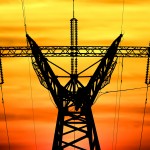 The growing public hunger for more sustainable products took a unique path earlier this week with news that some of world’s leading companies and non-profit organisations are supporting the development of the first global consumer label identifying products made with wind energy.
The growing public hunger for more sustainable products took a unique path earlier this week with news that some of world’s leading companies and non-profit organisations are supporting the development of the first global consumer label identifying products made with wind energy.
In announcing the WindMade initiative, Steve Sawyer, Secretary General of the Global Wind Energy Council (GWEC), said an international survey of more than 25,000 consumers shows 92% of respondents believe renewable energy is a good solution to mitigating climate change, and most of them would prefer products made with wind energy, even at a premium.
“Governments are dragging their feet, but consumers want to see change now,” said Sawyer, who is also the interim CEO of WindMade. “The private sector needs to step up to provide the solutions we need to respond to the global energy and climate crises. With WindMade, we want to facilitate the change that the public demands.”
 Greenpeace has hit the nail on the head in its just-launched report, pinpointing grid extension and smart grid management as crucial to the integration of large amounts of CO2-free renewable energy.
Greenpeace has hit the nail on the head in its just-launched report, pinpointing grid extension and smart grid management as crucial to the integration of large amounts of CO2-free renewable energy.
The ‘Battle of the Grids’ report shows that the lack of a fair energy market in Europe means renewables are often forced to play second fiddle to traditional power sources in getting access to the network. However, in a wider, more flexible power network, renewables could be transported from where they are produced to where the power is needed. According to Greenpeace, renewable energy could provide the majority – 68% — of Europe’s power by 2030. EWEA’s wind-only goal for the same year is 33% of Europe’s electricity – nearly half Greenpeace’s target from one renewable source alone. Both Greenpeace and EWEA think renewable energy can provide 100% of Europe’s electricity by 2050.
What is also important to remember, especially in these economically difficult times, is the vast savings well-thought-out grid development would bring. EWEA’s ‘Powering Europe’ report, released last November, identifies a massive €1,500 million yearly reduction in total operational costs of power generation due to the increased availability of all generation capacity. And if we can integrate 265 gigawatt (GW) of wind into Europe’s grids by 2020, we can save at least €41.7bn per year in the cost of electricity because wind power replaces power sources where fuel must be constantly bought and paid for.
 In a time of great unrest at British universities over tuition increases and programme cutbacks, it’s gratifying to note that at least one respected post-secondary institution is turning to wind power to lessen its carbon footprint.
In a time of great unrest at British universities over tuition increases and programme cutbacks, it’s gratifying to note that at least one respected post-secondary institution is turning to wind power to lessen its carbon footprint.
According to its website, the University of Nottingham has recently unveiled plans for three wind turbines near Clifton Bridge on the River Trent which, if approved, would supply green electricity directly to its University Park campus.
The turbines, which would meet one-third of the electricity needs of the campus, could reduce the university’s carbon emissions by 7,000 tonnes per year, equating to 40% of the reductions target it has set itself by 2015.
 Far from the bright lights of Rio de Janeiro, the north-easterly Brazilian states of Ceara and Rio Grande del Norte are blessed with some of the strongest and most consistent winds in the world.
Far from the bright lights of Rio de Janeiro, the north-easterly Brazilian states of Ceara and Rio Grande del Norte are blessed with some of the strongest and most consistent winds in the world.
With such high potential, it is not surprising that Brazil’s wind energy industry has been taking off massively in the last couple of years: the country added 264 MW of capacity in 2009 and by mid-2010, another 180 MW were installed, making a total of 786 MW.
In December 2009, the Brazilian energy regulator hosted the first wind-only auction, which contracted 71 wind energy projects for a total capacity of 1,800 MW. Two additional auctions took place in August 2010, resulting in an additional more than 3 GW of tendered capacity for September 2013.
 Numerous reports in the past week indicate that Egypt, concerned about diminishing oil and gas supplies, is getting ready to expand its wind power sector.
Numerous reports in the past week indicate that Egypt, concerned about diminishing oil and gas supplies, is getting ready to expand its wind power sector.
Egypt, which is the world’s 16th most populous nation with more than 80 million people, has announced a plan to produce 2,600 megawatts of wind energy this year in collaboration with several EU states and Japan.
Egyptian media organisation Al-Masry Al-Youm reports Egyptian Minister of Electricity and Energy Hassan Younes as saying that the ministry had already raised funds for several wind farms — each with a capacity of 540 megawatts — in the Gulf of Suez.
 The growing public hunger for more sustainable products took a unique path earlier this week with news that some of world’s leading companies and non-profit organisations are supporting the development of the first global consumer label identifying products made with wind energy.
The growing public hunger for more sustainable products took a unique path earlier this week with news that some of world’s leading companies and non-profit organisations are supporting the development of the first global consumer label identifying products made with wind energy.






 Comments
Comments



